
James FitzJames Butler, 2nd Duke of Ormonde, (1665–1745) was an Irish statesman and soldier. He was the third of the Kilcash branch of the family to inherit the earldom of Ormond. Like his grandfather, the 1st Duke, he was raised as a Protestant, unlike his extended family who held to Roman Catholicism. He served in the campaign to put down the Monmouth Rebellion, in the Williamite War in Ireland, in the Nine Years' War and in the War of the Spanish Succession but was accused of treason and went into exile after the Jacobite rising of 1715.
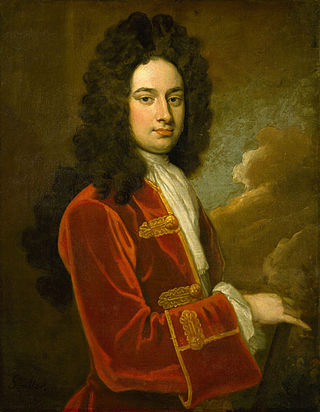
James Stanhope, 1st Earl Stanhope was a British Army officer, politician, diplomat and peer who effectively served as Chief Minister between 1717 and 1721. He was also the last Chancellor of the Exchequer to sit in the House of Lords.
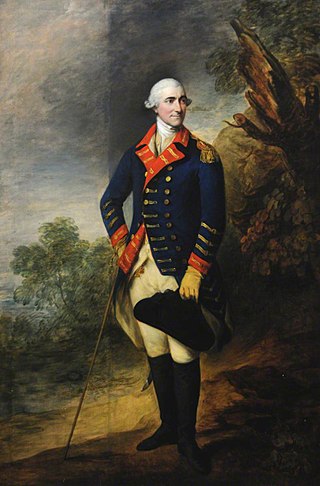
Field Marshal Henry Seymour Conway was a British general and statesman. A brother of the 1st Marquess of Hertford, and cousin of Horace Walpole, he began his military career in the War of the Austrian Succession. He held various political offices including Chief Secretary for Ireland, Secretary of State for the Southern Department, Leader of the House of Commons and Secretary of State for the Northern Department. He eventually rose to the position of Commander-in-Chief of the Forces.
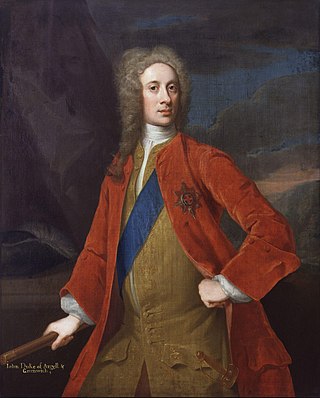
Field Marshal John Campbell, 2nd Duke of Argyll, 1st Duke of Greenwich,, styled Lord Lorne from 1680 to 1703, was a Scottish nobleman and senior commander in the British Army. He served on the continent in the Nine Years' War and fought at the Siege of Kaiserswerth during the War of the Spanish Succession. He then went on to serve as a brigade commander during the later battles of the War of the Spanish Succession, and was subsequently given command of all British forces in Spain at the instigation of the Harley Ministry. After conducting a successful evacuation of the troops from Spain, he became Commander-in-Chief, Scotland. During the Jacobite Rebellion, he led the government army against the Jacobite forces led by the Earl of Mar at the Battle of Sheriffmuir. Afterwards he served as Lord Steward and then Master-General of the Ordnance under the Walpole–Townshend Ministry.

Field Marshal Richard Boyle, 2nd Viscount Shannon, PC was a British Army officer and statesman. After serving as a junior officer at the Battle of the Boyne during the Williamite War in Ireland and at the Battle of Landen during the Nine Years' War, he commanded a brigade of grenadiers during the storming of Vigo during the War of the Spanish Succession. During this engagement the entire French fleet, under the command of the Marquis de Château-Renault, together with the Spanish galleons and transports under Manuel de Velasco, were either captured or destroyed. He also took part in a successful raid on Barcelona three years later. He went on to serve as Commander-in-Chief of the Royal Irish Army throughout the 1720s and 1730s.

Field Marshal John Dalrymple, 2nd Earl of Stair, was a Scottish soldier and diplomat. He served in the Nine Years' War and the War of the Spanish Succession and, after a period as British Ambassador in Paris, became a military commander at the Battle of Dettingen during the War of the Austrian Succession.

Field Marshal Richard Molesworth, 3rd Viscount Molesworth, PC (Ire) FRS, styled The Honourable Richard Molesworth from 1716 to 1726, was an Anglo-Irish military officer, politician and nobleman. He served with his regiment at the Battle of Blenheim before being appointed aide-de-camp to the Duke of Marlborough during the War of the Spanish Succession. During the Battle of Ramillies Molesworth offered Marlborough his own horse after Marlborough fell from the saddle. Molesworth then recovered his commander's charger and slipped away: by these actions he saved Marlborough's life. Molesworth went on Lieutenant of the Ordnance in Ireland and was wounded at the Battle of Preston during the Jacobite rising of 1715 before becoming Master-General of the Ordnance in Ireland and then Commander-in-Chief of the Royal Irish Army.
Field Marshal James O'Hara, 2nd Baron Tyrawley and 1st Baron Kilmaine, PC, was an Irish officer in the British Army. After serving as a junior officer in Spain and the Low Countries during the War of the Spanish Succession, he went on to become British ambassador to Lisbon establishing a close relationship with King John V there. He undertook a tour as British ambassador to Saint Petersburg before becoming Governor of Gibraltar where he set about improving the fortifications. He was briefly commander of British troops in Portugal during the Seven Years' War but was replaced within a few months. During his military career, he was colonel of eight different regiments.
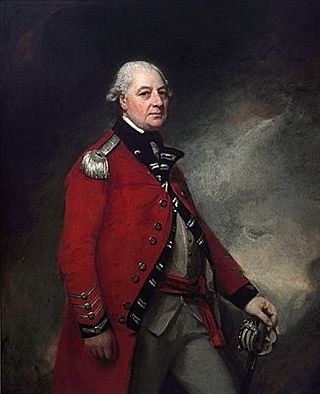
Field Marshal George Townshend, 1st Marquess Townshend, PC, known as The Viscount Townshend from 1764 to 1787, was a British soldier and politician. After serving at the Battle of Dettingen during the War of the Austrian Succession and the Battle of Culloden during the Jacobite Rising, Townshend took command of the British forces for the closing stages of the Battle of the Plains of Abraham during the Seven Years' War. He went on to be Lord Lieutenant of Ireland or Viceroy where he introduced measures aimed at increasing the size of Irish regiments, reducing corruption in Ireland and improving the Irish economy. In cooperation with Prime Minister North in London, he solidified governmental control over Ireland. He also served as Master-General of the Ordnance, first in the North Ministry and then in the Fox–North Coalition.

Lieutenant-General William Cadogan, 1st Earl Cadogan was an Irish-born British Army officer. He began his active military service during the Williamite War in Ireland in 1689 and ended it with the suppression of the 1715 Jacobite Rebellion. A close associate and confidant of the Duke of Marlborough, he was also a diplomat and Whig politician who sat in the English and British Houses of Commons from 1705 until 1716, when he was raised to the peerage as Baron Cadogan.

General Charles O'Hara was a British Army officer who served in the Seven Years' War, the American War of Independence, and the French Revolutionary War and later served as governor of Gibraltar. He served with distinction during the American War of Independence, commanding a brigade of Foot Guards as part of the army of Charles Cornwallis and was wounded during the Battle of Guilford Courthouse. He offered the British surrender during the siege of Yorktown on behalf of his superior Charles Cornwallis and is depicted in the eponymous painting by John Trumbull. During his career O'Hara personally surrendered to both George Washington and Napoleon Bonaparte.
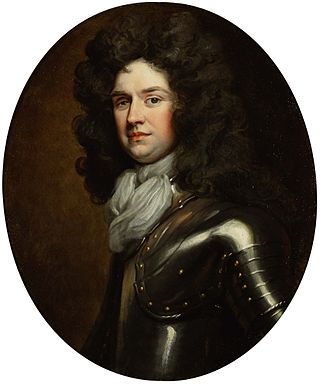
General David Colyear, 1st Earl of Portmore, was a Scottish general and Governor of Gibraltar.

Lieutenant-General Charles Butler, 1st Earl of Arran, de jure3rd Duke of Ormonde (1671–1758) was an Anglo-Irish peer. His uncle Richard was the 1st Earl of Arran of the first creation. The titles were re-created for Charles in 1693. His elder brother, the 2nd Duke of Ormonde, was attainted during the Jacobite rising of 1715, but in 1721 Arran was allowed to buy the estate back. At the death of the 2nd Duke, he succeeded as de jure 3rd Duke of Ormonde in the Irish peerage but did not claim the title.

Lieutenant General Humphrey Bland was an Irish professional soldier, whose career in the British Army began in 1704 during the War of the Spanish Succession and ended in 1756.

The siege of Barcelona took place between 14 September and 19 October 1705 during the War of the Spanish Succession when a multinational Grand Alliance army led by Lord Peterborough, supporting the Habsburg pretender to the Spanish throne, captured the city of Barcelona from its Spanish Bourbonic defenders, most of whom then joined the Habsburg army.

General Sir Charles Wills was a British Army officer and politician who served as Lieutenant-General of the Ordnance sat as a member of parliament for Totnes from 1718 to 1741.

General Charles Churchill was a British Army officer who served during the War of the Spanish Succession and an English politician who sat in the English and British House of Commons from 1701 to 1710. He was a younger brother of John Churchill, 1st Duke of Marlborough and both his military and political careers were closely connected with his brother's. Along with Marlborough's Irish Chief of Staff William Cadogan, he was one of Churchill's closest advisors. He was a Tory, in contrast to his Whig brother who tolerated and possibly used Churchill's Tory connections.
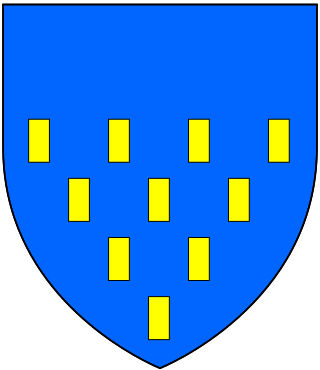
James Dormer (1679–1741) was a British Army officer, a lieutenant-general, and colonel of the 1st troop of Horse Grenadier Guards
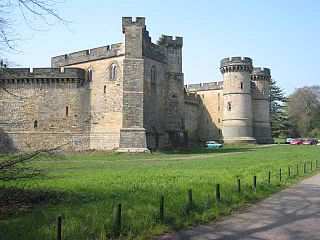
Sir Henry Belasyse, also spelt Bellasis, was an English military officer from County Durham, who also sat as MP for a number of constituencies between 1695 and 1715.
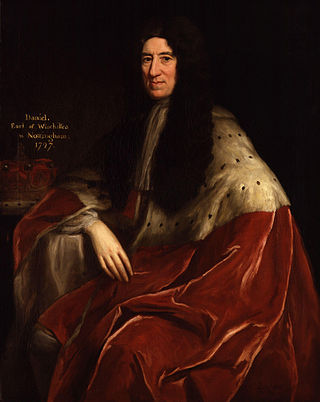
No Peace Without Spain was a popular British political slogan of the early eighteenth century. It referred to the ongoing War of the Spanish Succession (1701–1714) in which Britain was a leading participant. It implied that no peace treaty could be agreed with Britain's principal enemy Louis XIV of France that allowed Philip, the French candidate, to retain the Spanish crown. The term became a rallying cry for opposition to the Tory government of Robert Harley, Earl of Oxford and the terms of the Treaty of Utrecht.


















